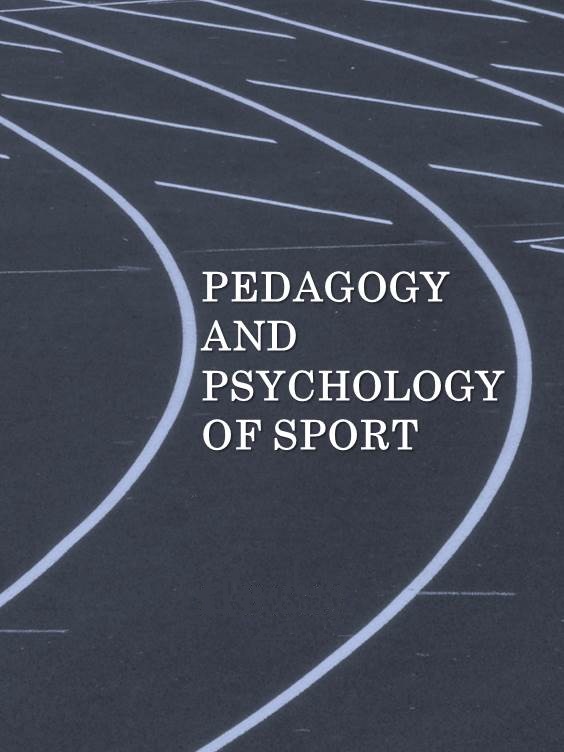Contribution of biomotor and psychomotor factors that determine Pencak Silat Front Kick ability
DOI:
https://doi.org/10.12775/PPS.2020.06.03.006Keywords
Pencak Silat, Biomotor, Psychomotor, Front KickAbstract
This study aims to determine the contribution of biomotor and psychomotor factors that determine pencak silat front kick ability. The study uses quantitative methods and confirmatory factor analysis design. This type of research used in this research is correlational research with confirmatory factor analysis design that confirms the relationship of indicator variables with latent variables that determine the ability of the front kick pencak silat. Data collection is processed and analyzed using a computer-based application Statistics SPSS (Product Statistics and Service Solutions) Version 23 and using the Kaiser-Meyer-Olkin test and Bartlett Test. The sample is a part or representative being studied. As a sample it is better to have the same characteristics as a population so that you can draw a picture of the population. The population and sample in this study were all students fostering the achievement of Pencak Silat UKM PSHT Sebelas Maret University with a total of 25 students. The sampling technique used was purposive sampling.The technique in collecting data uses tests and measurements. The results of the study are as follows: analysis of biomotor and psychomotor factors that determine the ability of the pencak silat front kick above, the biomotor and psychomotor factors that determine the ability of the front kick of pencak silat (H0 accepted) or those that have a factor component value of ≥ 0.5 are: Biomotor and psychomotor factors that contribute to determining the ability of pencak silat front kicks 1. Power of leg muscles with a factor component value of 0.92 2. Flexibility with a factor component value of 0.43 3. Power the abdominal muscles with a factor component value of 0.53 4. The balance with the factor component value is 0.91 5. Agility with a factor component value of 0.24 The results of the statistical analysis of biomotor and psychomotor factors that contribute to determining the ability of the front kick of pencak silat are leg muscle power (0.92), balance (0.91), abdominal muscle power (0.53), flexibility (0.42), and agility (0.24).References
Giriwijoyo Hyss, Sidik DZ. Konsep Dan Cara Penilaian Kebugaran Jasmani Menurut Sudut Pandang Ilmu Faal Olahraga. J Kepelatihan Olahraga. 2010;
Putra RT, Kiyatno, Siswandari. Analisis Faktor Biomotor dan Psikomotor Dominan Penentu Kemampuan Groundstroke Forehand Tenis Lapangan. Univ Sebel Maret. 2017;
Kartomi M. Traditional and modern forms of pencak silat in Indonesia: The suku mamak in Riau. Musicol Aust. 2011;
Widiastuti. Using game approach in improving learning outcomes of pencak silat. Asian Soc Sci. 2014;
Ediyono S, Dzakiria H. Sustaining the Indonesian martial art (Pencak silat) and culture for good character building: A systemic analysis. Adv Sci Lett. 2016;
Dei A. Relationship between length of leg and strength of leg muscle to frequency of straight kicks. Int Res J Eng IT Sci Res. 2020;
Sunardi C. The Fighting Art of Pencak Silat and Its Music: From Southeast Asian Village to Global Movement ed. by Uwe U. Paetzold and Paul H. Mason. Asian Music. 2019;
Dongoran MF, Muhammad Fadlih A, Riyanto P. Psychological characteristics of martial sports Indonesian athletes based on categories art and fight. Enferm Clin. 2020;
Muhamad, Memet; Haqiyah, Aridhotul; Riyadi DN. Positive Self-Talk on Pencak Silat Performance. J Phys Educ Sport Heal Recreat. 2019;
Lestari DS, Sutapa P. The Skills Development of Pencak Silat Training Model based on Traditional Games Movement. In 2020.
Sartono N, Puspitaningrum R, Lubis J, Siregar NM. Profile energy national athlete of Indonesia Pencak silat. In: AIP Conference Proceedings. 2018.
Hajir A. The Influence Of Flexibility, Strength, And Balance On Straight Forward Kick Skilss Of Pencak Silat Athletes In Palopo City. Pascasarj UNM. 2019;
Trisnowiyanto B. Latihan Peningkatan Kemampuan Biomotor (Kelincahan, Kecepatan, Keseimbangan Dan Fleksibilitas) Dengan Teknik Lari (Shuttle Run, Zig-Zag, Formasi 8) Pada Pesilat. J Keterapian Fis. 2016;
Rahman NA. Model latihan untuk mengembangkan biomotor endurance pesilat remaja. Musamus J Phys Educ Sport. 2019;
Iswana B, Siswantoyo S. Model latihan keterampilan gerak pencak silat anak usia 9-12 tahun. J Keolahragaan. 2013;
Hoque ME. Three domains of learning - cognitive, affcetive, psychomotor. J EFL Educ Res. 2019;
Dlugonski D, DuBose KD, Rider P. Accelerometer-measured patterns of shared physical activity among mother-young child dyads. J Phys Act Heal. 2017;
Milić M, Grgantov Z, Katić R. Biomotor status and kinesiological education of girls aged 10 to 12 years--example: volleyball. Coll Antropol. 2012;
Čavala M, Katić R. Morphological, motor and situation-motor characteristics of elite female handball players according to playing performance and position. Coll Antropol. 2010;
Prasetyo FY. The physical conditions of Pencak Silat athletes. In: IOP Conference Series: Materials Science and Engineering. 2017.
Dimyati, Irianto Dp, Lumintuarso Ria. Exploring the Psychological Skills of Indonesian Pencak Silat Athletes at the 18th Asian Games. / Badanie umiejętności psychologicznych indonezyjskich zawodników Pencak Silat podczas 18 Igrzysk Azjatyckich. Ido Mov Cult J Martial Arts Anthropol. 2020;
Akbar M, Hardiansyah L, Septiandi B, Rusdiana A. Roundhouse Kick Cinematic Analysis - The Comparison between Skill and Unskill in Pencak Silat. In 2018.
Finch WH, French BF, Finch WH, French BF. Exploratory and Confirmatory Factor Analysis. In: Educational and Psychological Measurement. 2018.
Johnston R. Confirmatory Factor Analysis (CFA). In: Encyclopedia of Quality of Life and Well-Being Research. 2014.
Arikunto S. Prosedur Penelitian, Jakarta. Rineka Cipta. 2010;
Ariakujto. Sampel Penelitian. J Chem Inf Model. 2019;
Downloads
Published
How to Cite
Issue
Section
License
The periodical offers access to content in the Open Access system under the Creative Commons Attribution-NonCommercial-ShareAlike 4.0
Stats
Number of views and downloads: 771
Number of citations: 0



